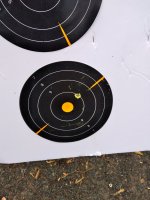20-40 grit corn cob blasting media - this is A LOT finer than the corn cob tumbling stuff most of us are familiar with (which is usually a much larger/coarser 12-20 grit).
It runs through the flash holes like water when you're done tumbling. I throw the cases in for ~1 hour or so and they come out lube-free and perfect, and the stuff just pours right out the cases without even really having to sift the cases, shake them, or anything else.
This is the stuff I use, it's awesome. I got a 50lb bag that came with a reloading kit I bought from someone and I'm still working on finishing up the same bag years later.
Super shiny brass, doesn't stick in flash holes at all.


